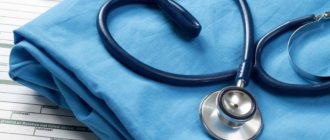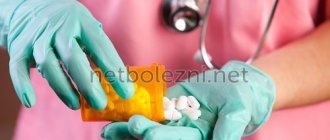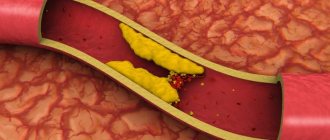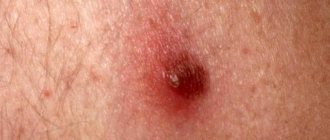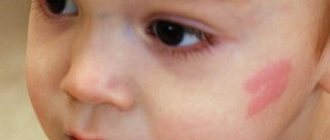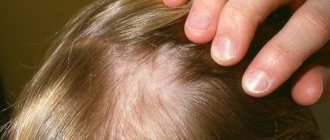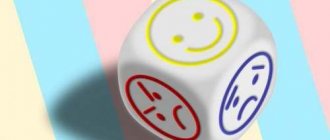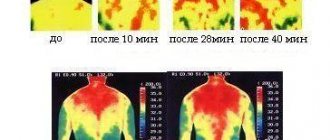Causes of frequent and strong heartbeats - what causes tachycardia?
Heart rhythm is a constant process of contractions of the main organ in the human body. And the slightest failure of the heart is always a signal for examination.
The heart rate in a healthy person is usually 60-80 beats per minute . With a sharp increase in this frequency to a value of 90 beats or more, they speak of tachycardia.
Such attacks tend to begin unexpectedly and end just as unexpectedly, and the duration of an attack can range from 3-4 seconds to several days. The more emotional a person is, the higher his risk of encountering tachycardia.
However, there are many reasons for this symptom (precisely a symptom, because tachycardia is not a disease , but a sign of some disorder in the body).
It is also important to distinguish tachycardia from the body’s natural reaction to physical activity or an attack of anxiety or fear. Various factors can affect your heart rate...
Types of tachycardia
Depending on the reason why the heartbeat increases, tachycardia occurs:
- Physiological. Pathology develops due to stress or physical activity.
- Pathological. An unreasonable increase in heart rate occurs at rest and can be associated with serious illnesses.
According to the rhythm of the heartbeat:
- sinus (heart beats occur at regular intervals);
- arrhythmic (irregular heartbeat).
Depending on which part of the myocardium the disorder occurs, an accelerated heartbeat occurs:
- atrial or supraventricular;
- ventricular.
Tachycardia is diagnosed more often in women than in men, because they are more emotional and have a harder time dealing with stressful situations, as well as in people who often drink coffee.
For example, heart disease:
- Myocarditis (associated symptoms: pain, weakness, low-grade fever).
- Heart defect (approx. – congenital or acquired defect).
- Arterial hypertension (pressure in this case rises from 140/90 and above).
- Myocardial dystrophy (due to impaired cardiac/muscle nutrition).
- Coronary artery disease (note – manifested by a heart attack or angina pectoris).
- Anomaly of heart development.
- Cardiomyopathy (note – deformation of the heart/muscle).
- Arrhythmia.
It is worth noting other factors that can cause an attack of tachycardia:
- Mental/nervous disorders, stress, fear, etc.
- Lack of physical activity, sedentary work.
- Insomnia.
- Taking certain medications. For example, antidepressants. Or taking medications for too long (indiscriminately).
- Taking drugs or alcohol.
- Abuse of various drinks containing caffeine.
- Excess weight or advanced age.
- Magnesium deficiency.
- Chocolate abuse.
There are many reasons. And there are more of them than in the above list. The heart can react to any changes or disorders in the body.
How to determine whether you should worry?
The only option is to see a doctor .
Heartbeat in the morning
Patients often complain of rapid heartbeat in the morning. This condition is directly related to neuroses. Tachycardia upon awakening is the main symptom of hypochondriacal disorders. Sometimes noted:
- interrupted and restless sleep;
- painful psychogenic sinus tachycardia;
- fear of death.
To stop the manifestations, antidepressants and tranquilizers are added to the drugs aimed at stabilizing the work of the heart muscle.
In addition to nervous disorders, tachycardia upon awakening is associated with VSD. To improve the condition, you should:
- normalize sleep patterns;
- wake up calmly, get up without sudden movements;
- do light exercises in bed for 5-10 minutes;
- sleep at least 6 hours;
- Ventilate the room regularly.
Arrhythmia, in turn, can be of the following types:
- Sinus. Usually the patient independently determines the beginning and end of the attack. It is treated by eliminating influencing factors and changing lifestyle.
- Paroxysmal. It is confirmed during an attack using electrocardiography. The source of excitation is usually located in one of the parts of the cardiac system - the atrium or ventricle.
Traditional methods of therapy
Pulsating pressure often does not bother a person at first, but over time it tends to become more severe and unpleasant. This applies to both men and women, both children and the elderly. Problems of the cardiovascular system have become very widespread.
That is why there are also quite a few methods to combat them. Many of them are based on folk healing recipes.
The following treatment methods are popular:
- Tincture of 1 tsp. celandine and 10 gr. dried hawthorn.
- A mixture of 1 lemon juice, 1 part rowan juice, 3 parts cranberry juice, 2 parts carrot juice and 2 parts alcohol.
- A mixture of 1 kilogram of lemons, 1 kilogram of honey and 40 apricot kernels. All these ingredients should be thoroughly ground or ground and mixed together.
Pulse high treatment is varied. But before starting therapy, you should consult with your own doctor.
For example…
- Heart failure (if the heart is unable to transport the required amount of blood).
- Pulmonary edema.
- Heart attack, stroke.
- Cardiac arrest, sudden death.
- Fainting. What to do if you faint - first aid
- Cramps.
- The appearance of blood clots in the lungs/arteries.
The most dangerous thing is when an attack “overtakes” a person suddenly and where no one can come to the rescue.
For example, while driving on the road, while swimming, when returning home from work, etc.
Therefore, even with minimal suspicion of tachycardia, there is no time to waste!
Timely consultation with a specialist can save lives!
Causes
This reaction is caused by stress, excessive physical activity, and fever. Conventionally, physiological and pathological types of tachycardia are distinguished. The first may be a consequence of stress, a natural reaction with an increase in blood flow. The reasons are as follows:
- loads in the form of positive and negative emotions;
- physical activity, such as sports training and climbing stairs;
- tonics;
- taking certain medications: atropine, corticosteroids and others;
- environmental influences; hot, stuffy room, high humidity.
The pathological variety occurs as a result of diseases of the heart and blood vessels, the function of internal organs and systems (endocrine, vegetative). In this case, the causes are found outside the heart. They are:
- dehydration;
- significant blood loss;
- anemic conditions;
- oncology in the area of the adrenal glands;
- neuroses and psychoses;
- dysfunction of the thyroid gland - hyperthyroidism;
- sore throat, tuberculosis or infection with fever.
Often, as the pulse increases, pain occurs and the temperature rises. Tachycardia is provoked by many heart and vascular diseases. These are heart attack, failure, defects, inflammation.
Next you need...
- Place the person having a seizure so that the body is lower than the head.
- Open all the windows wide open. The patient needs oxygen.
- Place a damp, cool cloth on your forehead (or wash with ice water).
- Free the person from clothing that interferes with proper breathing. That is, take off excess, unbutton the shirt collar, etc.
- Find a sedative in your medicine cabinet to alleviate symptoms.
- Do breathing exercises. 1st: take a deep breath, hold your breath for 2-5 seconds and exhale sharply. 2nd: deep breaths and shallow exhalations with your tongue hanging out for 15 seconds. 3rd: Cough as hard as possible or induce vomiting. 4th: inhale for 6-7 seconds, exhale for 8-9 seconds. within 3 minutes.
- Brew tea from lemon balm or chamomile (green or regular tea, as well as coffee is strictly prohibited!).
- A massage will also help. 1: gently and gently press for 4-5 minutes on the right side of the neck - on the area where the carotid artery is located. Massage is inadmissible in old age (it can cause a stroke). 2: Place your fingers on your closed eyelids and massage your eyeballs for 3-5 minutes in a circular motion.
It is extremely important not to lose consciousness during an attack! Therefore, use all means to reduce your heart rate/rhythm. Including drinking cold water in small sips, acupressure, and even bringing the eyes to the bridge of the nose (the method was also noted as one of the most effective).
What causes increased heart rate
A rapid pulse in medicine is called tachycardia, and can be caused by physiological or pathological reasons. Frequent heart contractions are accompanied by dizziness, nausea, weakness, chest pain and other symptoms. Diagnosis of the cause of a rapid pulse is available only to doctors; treatment can be carried out with medications and folk remedies, but only after agreeing on a treatment regimen with the treating specialist.
An increase in heart rate to 100-140 beats per minute is usually associated with physical activity and emotional stress. But 200 beats per minute and above is a reason to call an ambulance and conduct a full examination. Otherwise, the development of heart pathologies, cardiogenic shock and complete stoppage of the organ is possible.
A rapid pulse in medicine is called tachycardia, and can be caused by physiological or pathological reasons. Frequent heart contractions are accompanied by dizziness, nausea, weakness, chest pain and other symptoms. Diagnosis of the cause of a rapid pulse is available only to doctors; treatment can be carried out with medications and folk remedies, but only after agreeing on a treatment regimen with the treating specialist.
Methods for lowering heart rate
You can get rid of an attack of increased heartbeat by coughing, pinching, or blowing your nose. It is also useful to wash your face with cold water. There are other methods to solve the problem:
- Take a deep breath and hold your breath for a few seconds, then exhale slowly.
- You can easily massage the carotid artery.
- Some medications help. In such situations, Valocordin or Corvalol. 20-30 drops are enough.
Medical assistance for a rapid pulse is necessary if these methods do not help improve the condition and the patient’s well-being quickly deteriorates.
To identify the cause of pulse deviation from the norm, doctors prescribe a series of diagnostic examinations. If you have an elevated pulse and other unpleasant symptoms, you should visit a medical facility. After an external examination and medical history, the doctor will conduct the necessary studies.
Pathogenic factors
There are several dozen diseases that can cause symptoms such as rapid heartbeat:
- cardiological pathologies (coronary heart disease (CHD), arterial hypertension and others);
- colds and infectious diseases accompanied by elevated body temperature (it is believed that when the temperature rises by 1 degree, the heart beats 10 beats faster);
- diseases of the lungs, esophagus, stomach, pancreas, adrenal glands (bronchial asthma, acute pancreatitis, etc.);
- endocrine pathologies (thyrotoxicosis, pheochromocytoma, diabetes mellitus);
- disorders of the autonomic nervous system, neurotic, psychopathic conditions;
- iron deficiency or vitamin deficiency anemia (in people with low hemoglobin, strong heart beats are caused by a reaction to a lack of oxygen in the blood);
- electrolyte imbalance (deficiency of potassium, magnesium, calcium, other macroelements).
Heart disease is the most common cause of tachycardia.
Complications that arise during pregnancy also lead to a woman’s heart beating too fast at rest, for example, excess weight gain (it creates an increased load on the heart), anemia, preeclampsia (a condition characteristic of the third trimester).
The causes of strong heartbeats associated with diseases of the cardiovascular system require special attention. These conditions can result in heart attack, stroke and other cardiovascular disasters. The most common causes of high heart rate:
Tachycardia at low pressure
A rapid heartbeat can also occur with low blood pressure due to large blood loss or with anaphylactic shock. A rapid pulse against the background of hypotension may be a consequence of vegetative-vascular dystonia. With low blood pressure the following are observed:
- pallor of the mucous membranes and skin;
- dizziness;
- headache;
- nausea;
- attacks of fear and anxiety.
- pallor of the mucous membranes and skin;
- dizziness;
- headache;
- nausea;
- attacks of fear and anxiety.
Tachycardia (or its absence) will be diagnosed using the following procedures and methods:
- Of course, an electrocardiogram of the heart to determine the frequency/rhythm of heart contractions.
- Next, ECG monitoring “according to Holter” to study all changes in the heart during the day, both during exercise and at rest.
- Electrophysiological study.
- Ultrasound, MRI and Echocardiography - they are needed to identify pathologies.
- Sometimes bicycle ergometry is prescribed. This method involves examining the patient using equipment while exercising on an exercise bike.
- Tests, thyroid examination, blood pressure measurement and other procedures will also be prescribed.
Principles of treating palpitations
Physiological tachycardia usually goes away on its own. But the tactics for treating pathological rapid heartbeat are determined by the cause of this condition. In some situations (for example, when a patient is diagnosed with a serious cardiac pathology), it is possible to significantly improve the patient’s well-being only through surgery—mainly minimally invasive operations are used.
To stop attacks of rapid heartbeat, doctors prescribe antiarrhythmic drugs to patients. They come in three classes:
- The first includes Novocainamide, Lidocaine, Propafenone and other drugs that block sodium and activate potassium channels in the myocardium.
- The second class is a large group of beta-blockers (Atenolol, Bisoprolol, etc.).
- Third class - Amiodarone.
Important
These drugs are prescribed strictly individually after identifying the cause of tachycardia and confirming the diagnosis. Self-medication is unacceptable!
Zubkova Olga Sergeevna, medical observer, epidemiologist
8, total, today
( 207 votes, average: 4.60 out of 5)
What to take for heart pain?
Coronary bypass surgery: indications for implementation and postoperative period
Related Posts
What might the doctor ask (be prepared)?
- How long does the attack last (you can time it if the attacks are repeated).
- How often, at what time and after what attacks usually occur.
- What is the pulse during an attack?
- What the patient ate, drank or took before the attack.
Even if an attack hits you for the first time, remember: this is an extremely serious signal from your body. That is, it’s time not only to get examined and follow the doctor’s orders, but also to change your lifestyle!
And, of course, it is necessary to organize proper nutrition for health.
The site Colady.ru warns: the information is provided for informational purposes only and does not constitute medical advice. Do not self-medicate under any circumstances! If you have any health problems, consult your doctor!
Resting tachycardia is a sign of mortal danger
Diseases
It is customary to measure heart rate per minute only when playing sports. Nobody thinks about what the heart rate is during the rest period or immediately after sleep. It turns out that understanding a person's resting heart rate can tell whether they are at risk of premature death.
Scientists have proven through long-term monitoring that apparently healthy people who do not suffer from cardiac pathology, but observe an increased heart rate, are at risk of dying earlier. Why is this happening? What is the evidence-based research on this?
Over the course of a number of years, a study was carried out on 3,000 people who did not suffer from heart problems. Analysis of data from this monitoring showed that those who had tachycardia at rest died significantly more often than those studied with a normal pulse or bradycardia. The facts are clear: 15 additional beats to the normal heart rate of 70 increases the risk of premature death by 16%. Tachycardia with an increase in the number of beats 12-27 above normal in combination with smoking increases early mortality by 20%. Interestingly, no significant relationship was found between mortality and level of physical fitness. Although no one can rule out the influence of cardiorespiratory endurance on the state of the body and life expectancy.
Pitfalls of resting tachycardia
It would seem that the pulse can tell. In fact, it indicates the level of physical endurance, the condition of the heart, blood vessels, and the health of the autonomic and central nervous systems. Tachycardia, although it can be physiological, is not constant and does not increase the contraction frequency above 20-30. In addition, resting tachycardia in most cases appears due to problems with the thyroid gland, hormonal disorders of the adrenal glands, pancreas, and central nervous system. It can appear against the background of obesity, hypertension, initial degree of heart failure and other myocardial pathologies, and in this case be a compensatory reaction. In itself, resting tachycardia is already evidence of a health problem. This is a warning about the need to be examined and prevent the development of possible cardiovascular pathologies in the future.
In any case, if when you try to measure your pulse during rest, the readings turn out to be above 80, then this is a reason to make an appointment with a cardiologist and therapist. Such precautions and attentiveness to oneself will allow for timely diagnosis, treatment or prevention of possible pathologies. Doctors will adjust your diet, lifestyle, workload, and help with advice, preventive and therapeutic medications. Engagement in anaerobic exercise, balanced nutrition, normalization of sleep and rest patterns, treatment of chronic pathologies and timely abandonment of bad habits are the basis for preventing the development of diseases and resting tachycardia as their symptom. Do not neglect simple health rules, because life and health are at stake.


